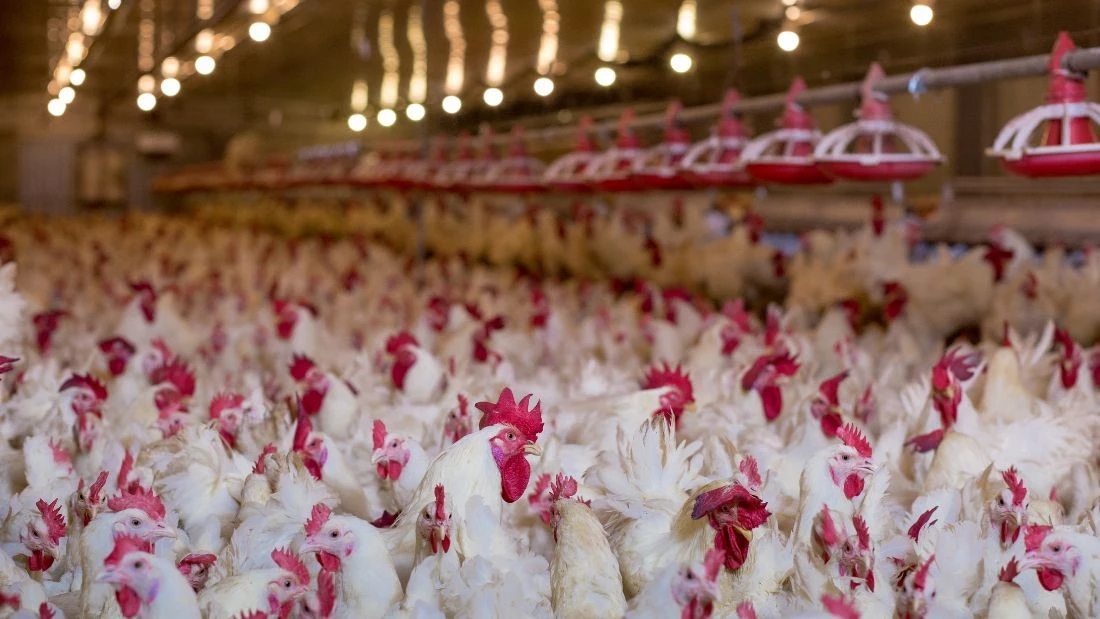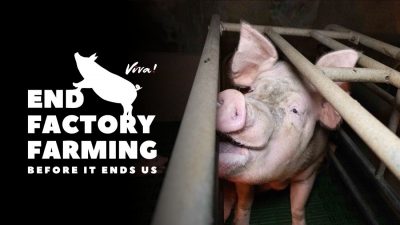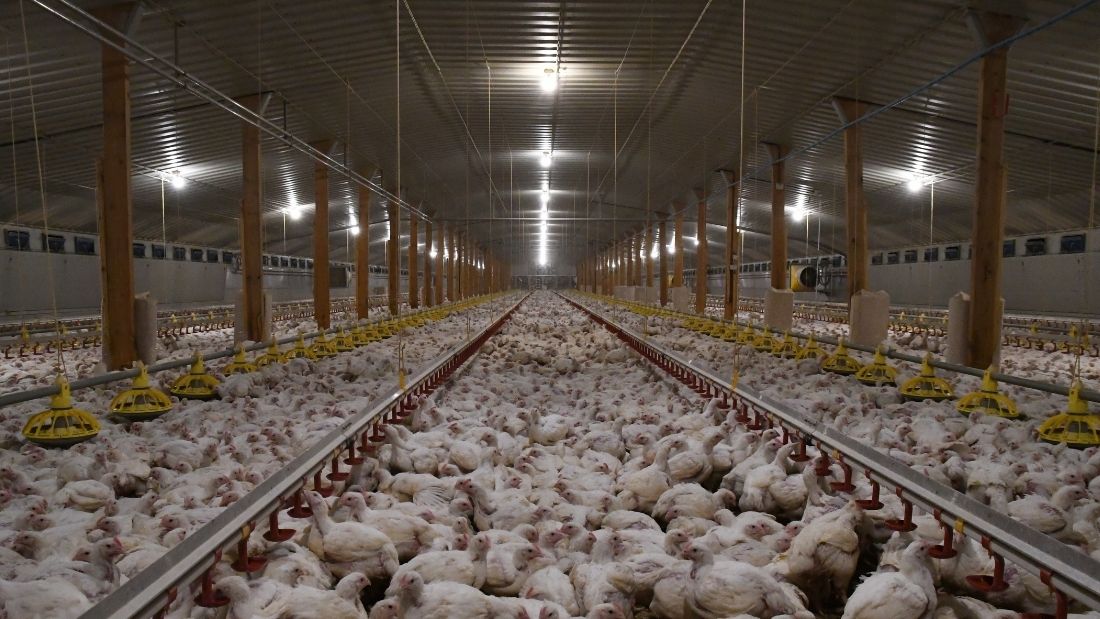Are we hatching the next pandemic in factory farms?

During the early days of the Covid-19 pandemic, the SARS-CoV-2 coronavirus jumped from humans to farmed mink and then back to humans. Scientists looking at the virus found that it had evolved and changed in mink, leading to the emergence of SARS-CoV-2 mink-associated variants which then spread between mink before infecting humans and then spreading in the community.
The first report of farmed mink being affected was in the Netherlands in April 2020, the month after the pandemic was declared. Subsequent outbreaks on mink fur farms were reported in Denmark, Spain, France, Italy, Sweden, Canada, Greece, Lithuania, Poland and the US. It turns out that SARS-CoV-2 spreads easily from humans to mink and by the end of January 2021, infections had been recorded in 400 farms and millions of animals were culled to try and limit disease spread.
Crowded, stressful and filthy conditions on intensive mink fur farms made them the perfect breeding ground for infectious diseases, as are factory farms that house chickens, pigs and dairy cows. Viva! has exposed the horrific conditions in these places time and time again but still they continue.
Fast forward to the spring of 2023 and we are witnessing another zoonotic disease jumping species. This time it’s avian influenza (bird flu), the disease that many scientists think will be the cause of the next global pandemic.
When mink at a large fur farm in Spain started to die in October 2022, it was thought the culprit was again SARS-CoV-2 but lab tests revealed something even scarier: it was the deadly avian influenza virus, H5N1. Authorities placed farm workers under quarantine and 50,000 mink at the farm were killed.
The H5N1 virus has previously infected mammals, with cases reported in cats, dogs, bears, foxes, skunks, possums, racoons and even seals. The World Organisation for Animal Health (WOAH) say that 200 different mammals worldwide have been infected by bird flu viruses. What’s causing concern among the scientific community is that this virus appears to have spread from mink to mink which suggests that it may now be being transmitted between mammals. The outbreak, described in a paper in Eurosurveillance, has reignited fears that H5N1 could trigger a human pandemic.
Previously, H5N1 has not been able to spread easily between mammals and most infected people have caught it from handling sick or dead birds. But now, it appears to have spread through a densely packed group of mammals and gained at least one mutation that favours mammal-to-mammal transmission.
Scientists warn that H5N1, now rampaging through birds in the UK and around the world, could infect other mammals and become still more transmissible.
Incredibly concerning
“This is incredibly concerning,” says Tom Peacock, a virologist at Imperial College London. “This is a clear mechanism for an H5 pandemic to start.” Isabella Monne, a veterinary researcher at the European Union’s Reference Laboratory for Avian Influenza in Italy, where the samples from Spain were sequenced, calls the finding “a warning bell.”
In the UK, we are experiencing the country’s largest outbreak ever and the virus has now spilled over into other mammals here too – foxes and otters that may have eaten infected birds have tested positive. In 2022, 56 mammals were tested by the UK Health Security Agency (UKHSA) and the Animal and Plant Health Agency (APHA) of which eight were positive. In 2023, more positive cases have been reported.
The virus that infected these UK mammals was found to carry a mutation that the UKHSA warns, “…may imply this virus has a propensity to cause zoonotic infections”. In other words, the mutated variant may find it easier to jump to humans. Avian influenza is now classed as a level three, on a transmission scale of one to five which means there is “evidence of viral genomic changes that provide an advantage for mammalian infection.”
Bird flu outbreaks used to occur in the UK during winter months only, with cases falling in spring and stopping altogether during summer months. In the winter of 2020 to 2021, for example, 26 cases of bird flu (mostly H5N8) were reported in captive birds, mostly commercial poultry. According to the European Food Safety Authority (EFSA), during the autumn of 2022, UK poultry farms were the hardest hit in Europe with 115 of the 398 outbreaks in domestic poultry across Europe occurring in the UK.
The current UK epidemic began in October 2021 and continued throughout 2022 and into 2023. During this time, over 300 cases in captive birds have been reported and, according to Madeline Cuff, environment reporter at New Scientist, 15 million domestic birds have been culled. Of course, this doesn’t include the huge number of wild birds that have died.
UK Avian Influenza Prevention Zones (AIPZs), strict biosecurity measures and compulsory housing orders have been used to try and limit the spread of the disease but they haven’t worked and bird flu continues to spread, revealing likely breaches of biosecurity measures. The best way to stop bird flu is to end factory farming and remove the viral reservoir they represent.
Bird flu viruses are among the most dangerous viruses that can affect humans, with a case fatality rate ranging from around 30 to 60 per cent. Scientists have been warning for years about the pandemic threat posed by factory farms and wildlife markets and many fear that the next pandemic will be caused by an influenza virus, making the jump to humans from poultry or pigs.
Commenting on this latest worrying development, Professor Ian Brown, director of scientific services at APHA said: “The virus is absolutely on the march. And it’s almost remarkable – it’s a single strain” (H5N1) he said, adding that greater international action to tackle its spread was needed. He told the BBC he was “acutely aware of the risks” of avian flu becoming a pandemic.
It’s certain that there WILL be another pandemic. Where, when and how is yet to be seen but bird flu is a serious candidate. Founder and Director of Viva!, Juliet Gellatley, says: “Having just been through a pandemic, you’d hope the world would act differently towards animals… to end fur farming, factory farming and wildlife exploitation with urgency. We are playing with fire.”
Find out more about Viva!’s campaign to end factory farming here.







